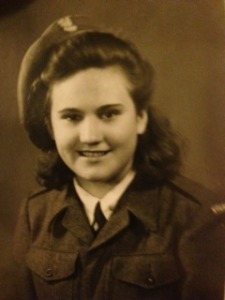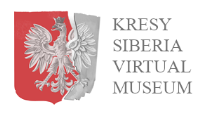Personal Details

|
||
| Name: | Walentyna Ryszkowska | |
| Maiden Name: | Misiewicz | |
| Nickname/Pseudonym: | ||
| Gender: | Female | |
| Date of birth: | 1927-09-15 | |
| Place of birth: | Poland, Wołyńskie, Kostopol, Niemilja, gmina Ludwipol | |
| Did this person die during World War ll?: | No | |
| Date of death: | 2001-1-7 | |
| Place of death: | United Kingdom | |
| Cause of Death: | ||
| Fathers given name: | Felicjan | |
| Entry ID: 146817 | Mothers given name: | Florentyna |
| Mothers maiden name: | Bronowicka | |
| Given name of spouse: | Władysław Ryszkowski | |
| Maiden name of spouse: | ||
| Given name(s) of children: | Barbara | |
| Description: | Walentyna came from a family of “Osadniks” (settlers/colonists), veterans of the Polish Army who had taken part in the Battle of Warsaw on 7 August 1920, and were given land in the Kresy to create the so-called ‘exemplary farms’. The cost of the land was to be repaid to the state by the settlers five years after the start of the programme in the spring of 1921. Her parents had a mill and a large farm, which they ran efficiently by working hard themselves and employing a few farmhands. Walentyna lived in the village of Niemilja, Wołyń, with her parents and four sisters Maria, Zofia, Alina and Danuta. Her ambition was to study Agronomy in order to help her father run their farm. The family had a happy and comfortable life, and lived in harmony with their multi-ethnic neighbours. When Poland was invaded by the Germans on 1 September 1939 and then by the Russians on 17 September 1939, the future became uncertain with the Russians carrying out mass deportations of Poles to Siberia followed by the Germans deporting people for forced labour to Germany.The family continued living under occupation wondering what would happen to them. Around March/April 1943 rumours reached their village that Ukrainian nationalists were attacking Polish villages and committing atrocities on Polish civilians, as well as on Ukrainians who would not collaborate with them or were married to Poles. This was initially considered as Soviet propaganda and therefore not taken too seriously. Walentyna described a disturbing dream she had around that time. She dreamt that, as she was returning home after visiting someone in a nearby village, she could see smoke rising from her village and could hear people screaming in terror. Overcome by fear she plunged into the cold water of a nearby river and hid herself under a bridge, emerging from her hiding place in the morning. The dream was very realistic and Walentyna woke up in a terrible state but was relieved that it was only a dream, although she was haunted by it for the rest of the day. She did not realise the significance of her dream until the following day, 25 May 1943, when she was returning home in the early evening, having spent the day at her cousin’s house in a neighbouring village. As she approached Niemilja, she could see smoke rising high into the sky and could hear people screaming and wailing. The situation was like a replay of her dream as she jumped into the River Słucz, which flowed through her village, and hid herself in the cold water under a bridge. She spent the whole night there trembling from fear and cold until the early hours of the morning. When she carefully emerged from her hiding place and made her way to her village, she found her father and her sister Maria dead; her other sister Zofia was barely alive and died later, and Niemilja had been burnt to the ground. Her mother had managed to survive the massacre with the two youngest daughters, 7 year old Alina and 1 year old Danuta, by hiding in the nearby woods. The massacre took place in close proximity to a German garrison in Bystrzyce without any reaction from the Germans, but soon afterwards they arrived and evacuated the few survivors to a makeshift camp. The family and thousands of other Poles were then deported by the Germans to Tyrol in Austria for forced labour. Walentyna at 15 years old became the main breadwinner because her mother had the young children to look after. Some days her mother would work and Walentyna would take care of the children. Eventually Alina started attending a German school and, being an intelligent child, soon picked up the language. The family and the other Poles were later transferred to Germany, but the country was soon occupied by the Allies and so they were then transported by the Americans to Italy. Here Walentyna enlisted with the Polish Women’s Auxiliary Army Service (PWSK), and started working in the No.3 Polish General Hospital in Palagiano tending to Polish soldiers who had been wounded in the Battle of Monte Cassino. Her mother and sisters were now under Polish military protection and were housed in a DP Camp in Trani. Her sisters started attending school and life took on some form of normality. In 1946 Walentyna was evacuated with the Polish Forces from Italy to the U.K. and housed in Iscoyd Park Camp, Shropshire, where she started working at the No.4 Polish Hospital. Her mother and sisters were evacuated separately with other military families and initially housed in Foxley DP Camp, near Hereford, where they were allowed to stay until 21 November 1946. They were then reunited with Walentyna in Iscoyd Park and were eventually housed in a Nissen hut in Tilstock Camp, Shropshire. Whilst living in Iscoyd Park, Walentyna met Władysław Ryszkowski, whom she married in August 1948 at St Mary’s Catholic Cathedral in Wrexham, North Wales. As a married couple they were then housed in Tilstock Camp near Walentyna’s family, and their daughter Barbara was born in October 1949. |
Personal Situation at the outbreak of WWll
| Residence at the outbreak of WWll: | Poland, Wołyńskie, Kostopol, Niemilja, (near Bystrzyce) |
| Kresy Inhabitant Status: | Civilian settler / Family member of civilian settler |
| Ethnicity: | Polish |
| Religion: | Roman Catholic |
| Education Level: | |
| Occupation at the outbreak of WWll: | Student |
| Military status at the outbreak of WWll: | Not Applicable |
| Military Rank at the outbreak of WWll: |
Deportations and Repressions
| Other Information: |
For those who were repatriated to Poland from the Kresy or the USSR, please provide the following information
| Date of return to Poland: | // |
| Province: | |
| County: | |
| Locality: | |
| Nearest large city: |
For those who stayed in the Kresy area during WWII, please provide the following information
| Province - as at 1939: | |
| County: | |
| City / Place: | |
| Nearest Large City: |
Military Experience
| Served in | Unit | From: yyyy | mm | dd | To: yyyy | mm | dd |
|---|---|---|---|---|---|---|---|
| Polish Resettlement Corps | 1947 | 1948 | |||||
| Women's Army Auxiliary Service | No.3 Polish General Hospital in Palagiano Italy | 1945 | 1946 | 12 | 5 |
| Other Military Service: | |
| Participation in WWII battles: | |
| Medals received: | British War Medal 1939/45 |
| Other Battles: |
Other Wartime Circumstances
| Type of circumstance | Day | Month | FROM Year | Day | Month | TO Year | Additional Information |
|---|---|---|---|---|---|---|---|
| German forced labourer | 1943 | 1945 | Walentyna was first deported with her family for forced labour to Tyrol in Austria and later to Germany. |
Other Wartime Circumstances
| Other Information: | In Austria the family was housed in a primitive wooden hut near Dorf Fellbach, between Linz and Spital, and Walentyna had to work hard in a paper factory and carry heavy rolls of paper up steep hills. Her mother had to work in a forest tree plants nursery. |
| Orphanages: | |
| Civilian Camp in the Middle East: | |
| Civilian Camp in India: | |
| Civilian Camp in Africa: | |
| Please provide information if none of the preceding apply: |
Residence After 1945
| Country | State | District | Locality | Nearest large city | Description |
|---|---|---|---|---|---|
| United Kingdom | Shropshire | Whitchurch | In 1946 Walentyna and her family were evacuated to the United Kingdom, and she started working in the Polish No.4 Hospital in Iscoyd Park, Shropshire, where she met Władysław Ryszkowski. When they married in 1948 they were housed alongside their families in a Nissen hut at the Polish Camp in Tilstock, Shropshire. After their daughter Barbara was born, they lived in various other Polish camps: Doddington Camp in Cheshire, then Llanerch Panna No.11 Hospital and finally Penley No.3 Hospital in North Wales, where Walentyna and Władysław worked as orderlies. In 1955 the family moved to Bradford in West Yorkshire. | ||
| Italy | Puglia | Palagiano | Taranto | From Germany Walentyna and her family were transported with other Polish refugees by the Americans to Italy where she enlisted with the Polish Women’s Auxiliary Army Service (PWSK). |


